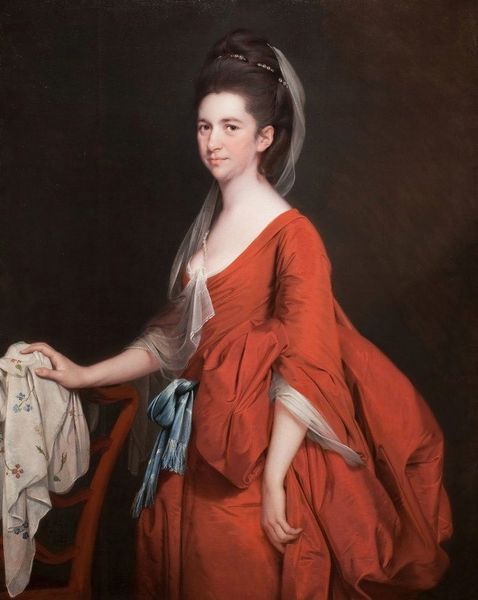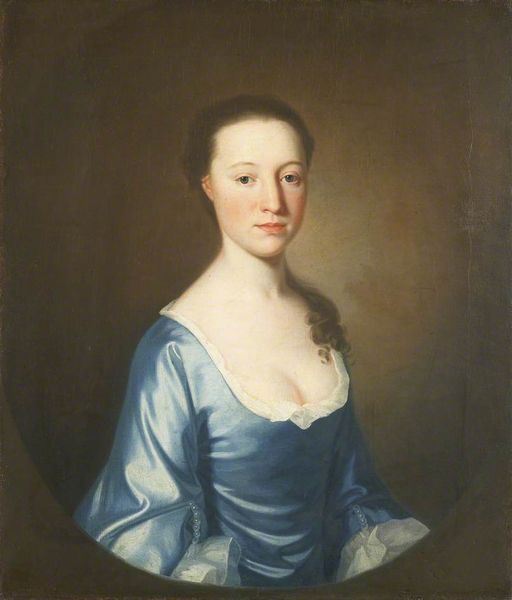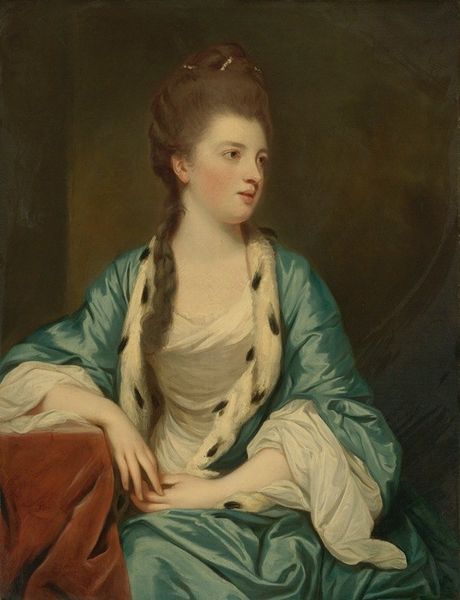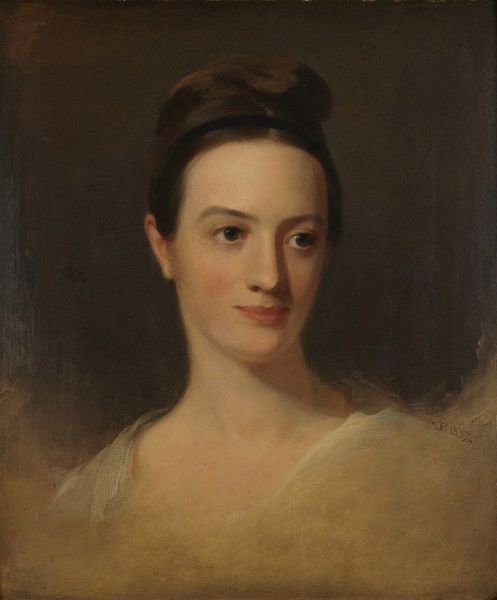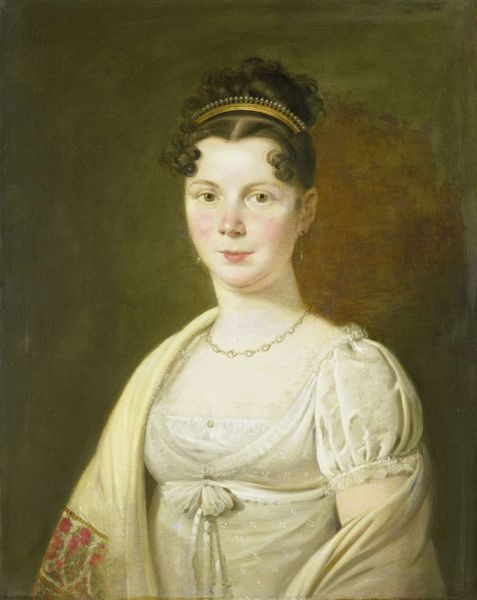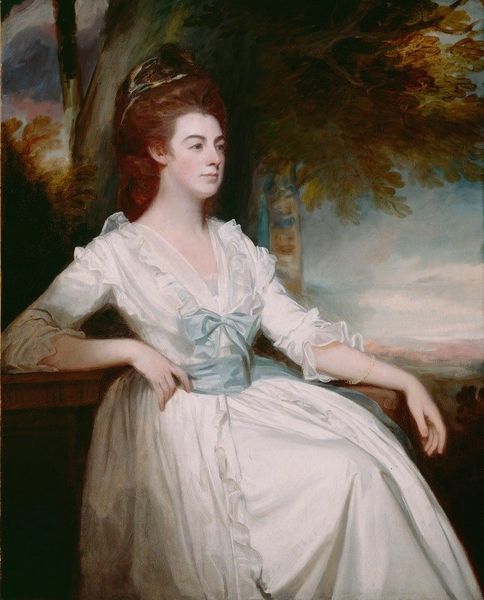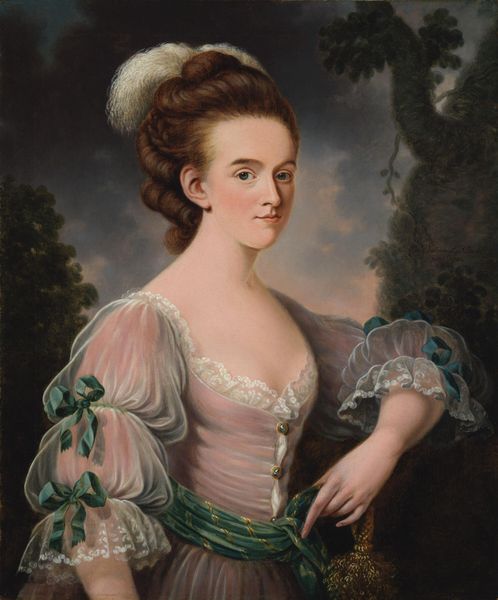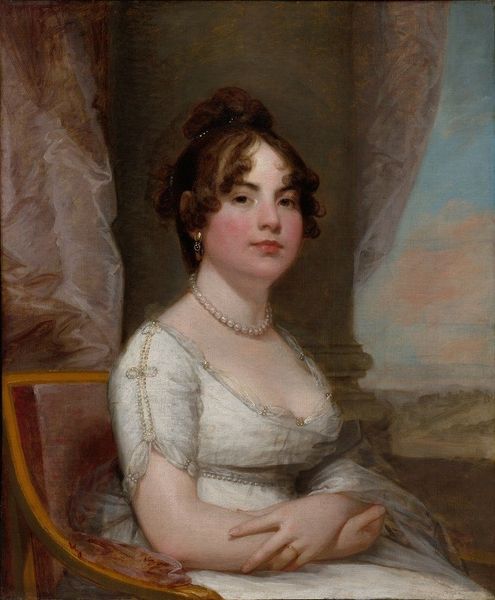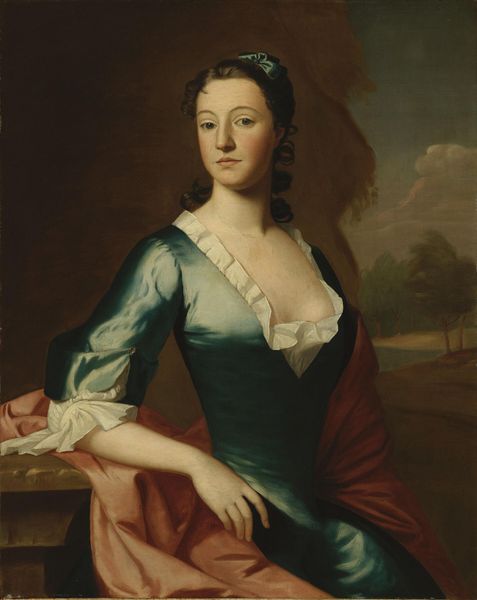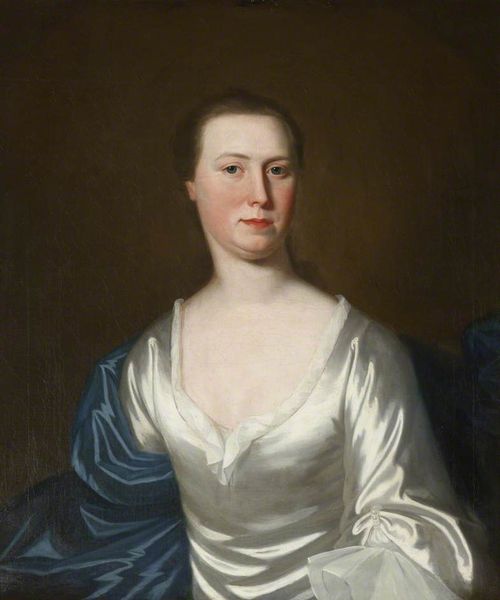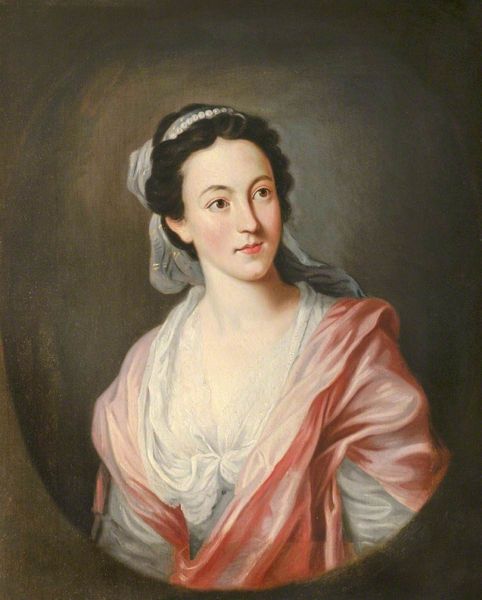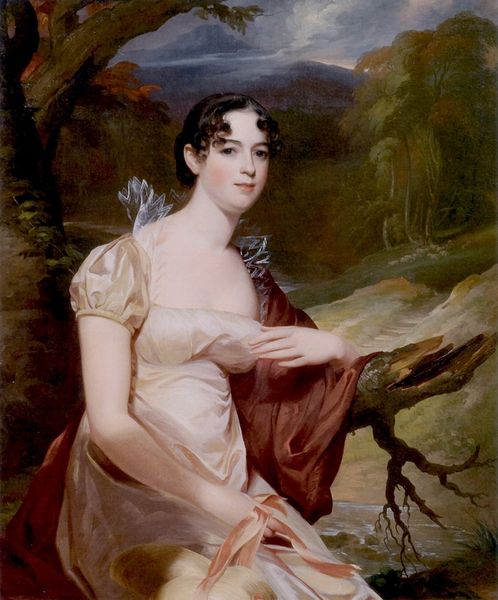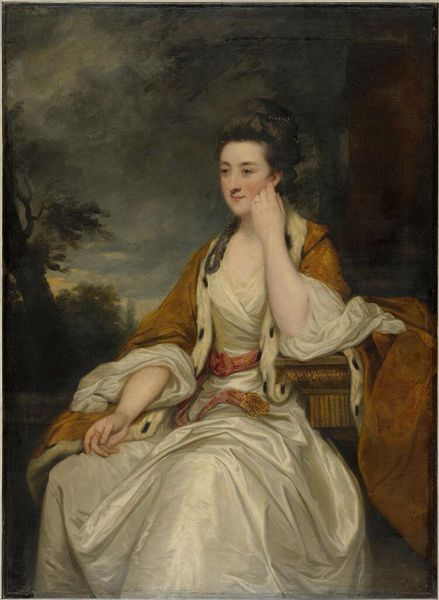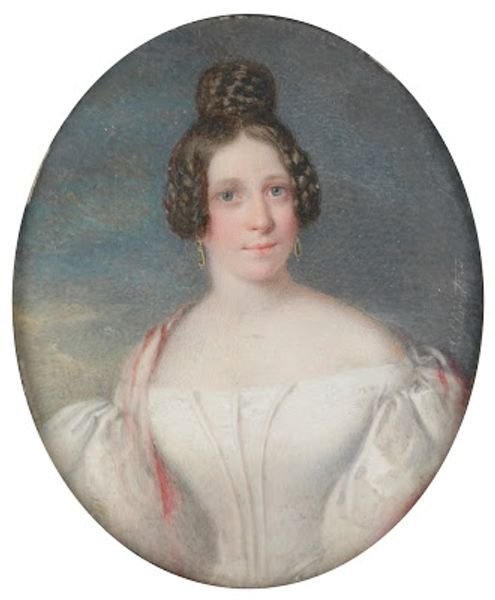
painting, oil-paint
#
portrait
#
neoclacissism
#
painting
#
oil-paint
#
landscape
#
realism
Copyright: Public domain
Curator: Isn't this just divine? Ralph Earl's portrait of Clarissa Seymour, painted in 1789, captures her youth against this pastoral dreamscape. I can almost smell the freshly cut grass. Editor: There's a tension in the composition, though. While the landscape promises freedom, her dress feels…constricting. The high collar, the severe lines, it speaks to the societal expectations placed on women, particularly of her class, during that era. Curator: Constricting maybe, but also commanding! She knows who she is. Just look at the slight smirk, the easy confidence. She knows that frilly pink skirt looks absolutely scrumptious. Editor: It is visually appealing, I’ll give you that. And those black accents, at her neck, wrists, and waist – stark markers of self-presentation. The detail, if you look closely, indicates refinement. I can't help but see a subtle rebellion in those sartorial choices. They're not traditionally neoclassical; perhaps she’s shaping her own narrative. Curator: Oh, I completely agree. I can almost see her thinking, "I’ll play the game, but I'll add my own little flourish." Ralph Earl's such a genius at capturing these complex nuances. You almost feel you know what this woman dreams of. Editor: Dreams? Or limitations? Consider that many women of the late 18th century found their identities solely through marriage. The painting's very title, “Clarissa Seymour (later Mrs. Truman Marsh)” points us toward the social coding of her existence as relational. Is the idyllic backdrop just a symbolic gilded cage? Curator: Cage is a bit harsh, darling! Maybe it’s a frame? You see what you want to see, right? For me, she’s radiant with life and full of endless possibility. What does the brook babble about when she’s sitting nearby, that’s what I wonder? Editor: Well, if you’re asking me, that brook is likely whispering the same concerns many women shared then and now: power, autonomy, self-representation in a world that constantly seeks to define them. Curator: Ah, well I guess that’s the power of art – its ability to speak to us so differently across time. Editor: Indeed. It's a testament to both Earl’s skill and to Clarissa Seymour Marsh, who remains an enigmatic, albeit silent, subject even centuries later.
Comments
No comments
Be the first to comment and join the conversation on the ultimate creative platform.
